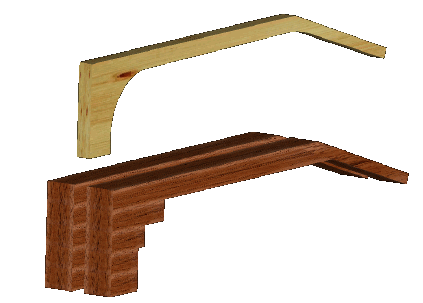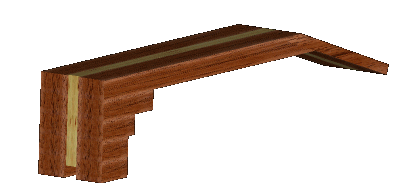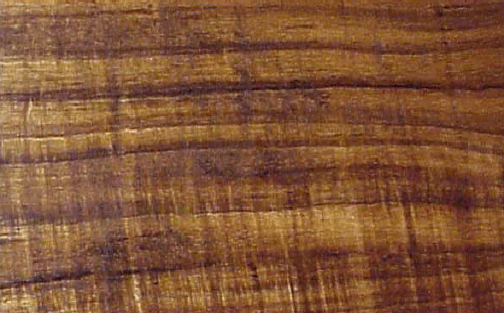Please use the menus above to learn about the various components and methods I use in building stringed instruments.
Neck Wood and Defense of the Laminated Neck:
All my guitar necks are built up from straight-grained quartersawn Honduras Mahogany and quartersawn Maple. I spend a lot of time on neck construction, believing it to be a major source of future trouble if not given proper attention during construction of the instrument. Contrary to popular belief, a one-pice neck is not a wonderful feature. I wish I could convince myself that a one piece neck is superior, because it would save many hours of work and eliminate many possibilities for an error to occur. It would also make carving of the neck easier and more predictable, since the grain of the wood in a one piece neck is all going in the same direction. The material cost is also less for the one piece neck, since you can get (2) necks and (3) neck blocks out of a single blank which costs less than the material needed to build (2) laminated necks and buy material to make (3) neck blocks. Nevertheless, I believe the method I use is best for both me and you, so I will continue to do it.
Neck Construction:
First, a narrow mahogany neck with a scarf-jointed peghead and stacked heel is constructed. I pay meticulous attention to the joint surfaces when building this, as the joints will determine the ultimate strength of the neck. The narrow neck is now cut down the center lengthwise. The outside egdes of the resulting (2) mahogany half necks are then jointed and prepared for gluing.
Next, the quartersawn maple is the cut to form a one-piece profile of the finished neck, allowing some extra stock all around for safety's sake (it's easier to remove the extra stock after gluing than to risk ending up with an undersized blank). The radial direction of grain should be perpendicular to the fretboard surface when laying out the neck profile. The profile faces are then jointed and prepared for gluing. What was the left side now becomes the right, and vice-versa.

 Once everything is properly prepared, the mahogany half necks are laminated with the maple neck profile to form a mahogany/maple/mahogany 'sandwich'. After gluing, the peghead and fretboard faces are jointed, the heel is profiled, and the tapered tenon is cut on the front face of the neck where it will join the body. The bolt-on neck hardware is then installed and the truss rod slot cut into the neck blank.
Once everything is properly prepared, the mahogany half necks are laminated with the maple neck profile to form a mahogany/maple/mahogany 'sandwich'. After gluing, the peghead and fretboard faces are jointed, the heel is profiled, and the tapered tenon is cut on the front face of the neck where it will join the body. The bolt-on neck hardware is then installed and the truss rod slot cut into the neck blank.
This construction method allows any bowing or twisting tendancies in the mahogany to stabilize each other, while the maple provides for extra strength in the direction of neck bow. This is a lot of extra work, but when done properly, the stiffness and stability of a neck constructed in this way will surpass that of a one piece neck.
In cases where a solid maple neck is used at the customer's request, the lengthwise lamination is eliminated, however, a scarf-joint peghead and stacked heel are still used for strength and stability.
All necks are outfitted with a double-action truss rod is installed for relief adjustments, should they ever be needed.
I am currently investigating alternative materials to the Honduras Mahogany, due to the inevitable reality that it will become much less available and much more expensive in the very near future. There are several good possibilities for alternative material with all the properties needed to produce a strong neck which is stable in service, can be worked reasonably easily and takes a finish well. Spanish Cedar, a traditional neck material for centuries in classical guitars, holds promise, especially when used with the same laminated construction technique I currently use with mahogany.
![header=[J. Rod McClellan] body=[This is me - playing guitar at a friend's house. Sorry about the 5 o'clock shadow]](images/Photos/people/rod1.jpg)


![header=[Interesting Info] body=[These are my initials - JRMc]](images/initials.gif)
